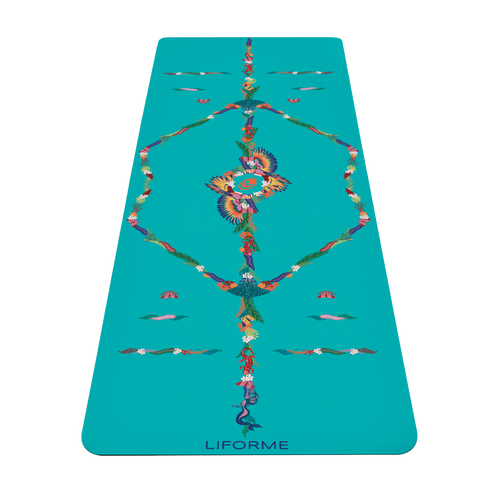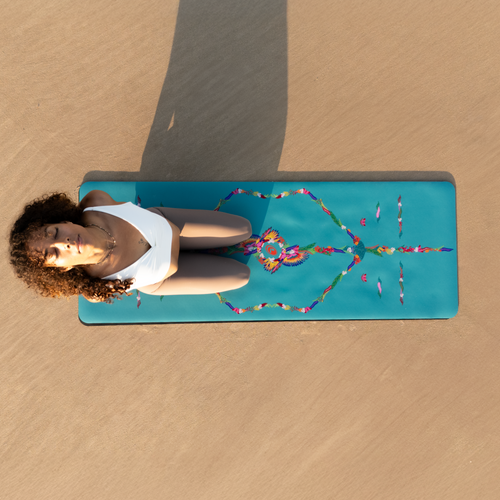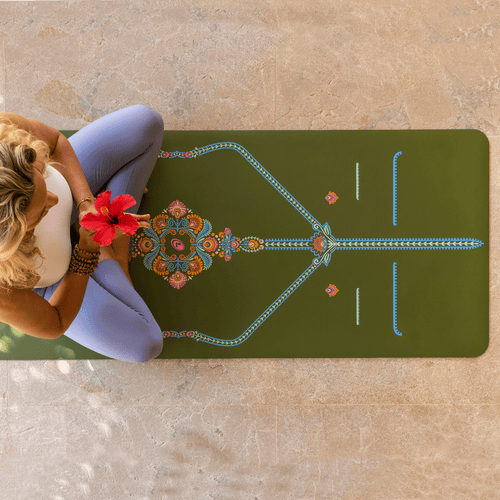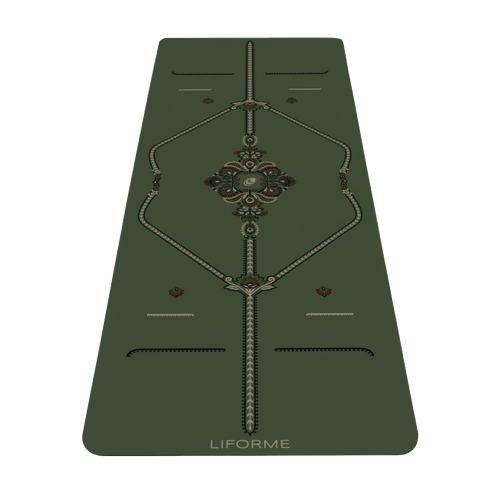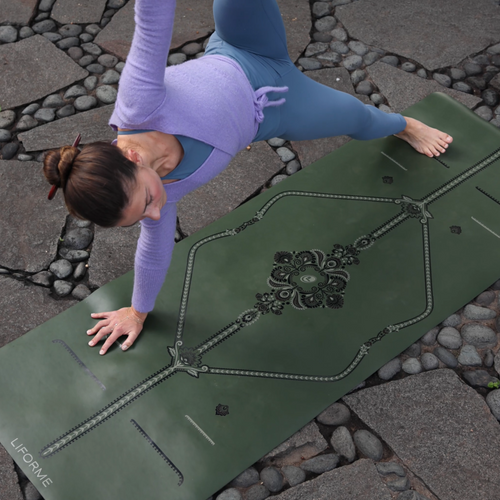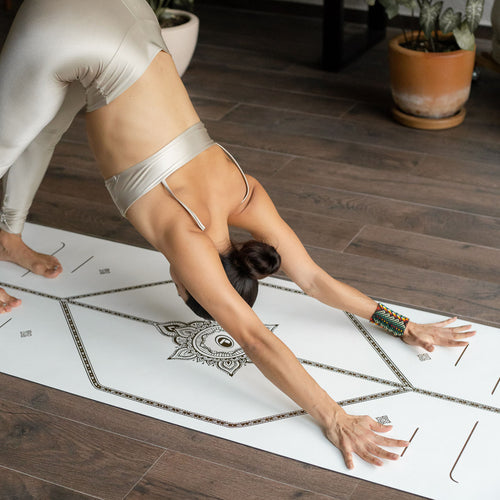After a workout or run, how quickly do you hit the showers and get on with your day? Though we’re all crunched for time, it’s a good idea to take a few minutes after your sweat sesh for active recovery. Stretching while you’re warmed up improves your overall flexibility, which helps prevent injuries. So, how about a little gentle yoga before you change out of your leggings?
The Role of Yoga in Exercise Recovery
Doing a few well-chosen yoga stretches after exercising is an efficient way to target several muscle groups at once. It also helps your body absorb the effects of your movement practice and prepares your mind to transition back to your day. We could call this an active Savasana.
Some workouts, like High-Intensity Interval Training (HIIT), cause spikes in the cortisol hormones in your bloodstream by stimulating the ‘fight or flight’ response of the sympathetic nervous system. Yoga and breathwork, by contrast, signal the parasympathetic nervous system that it’s time to get back on an even keel and ‘rest and digest’.
Yoga Poses for Post-Exercise Recovery
Child’s Pose (Balasana)
Why this pose: Begin your recovery with a good old-fashioned break in Child’s Pose to transition into a new movement modality. Take some deep breaths here.
Sanskrit Meaning: Bala (Child) Asana (Pose)
Yoga Level: Beginner
Pose Type: Kneeling
Benefits: Stretches your back and hips.
Step-by-step:
1. Begin on your hands and knees.
2. Keeping your arms straight, widen your knees and sink your butt toward your heels.
Cat-Cow Stretch (Marjaryasana-Bitilasana)
Why this pose: Undulations of your spine prevent your back muscles from stiffening up as they cool down. Synchronize your movements with inhalations and exhalations of breath.
Sanskrit Meaning: Marjari (Cat) Asana (Pose) and Bitila (Cow) Asana (Pose)
Also Known As: Chakravakasana
Yoga Level: Beginner
Pose Type: Kneeling
Benefits: Loosens up your back and core muscles.
Step-by-step:
1. Return to hands and knees.
2. On an inhale, drop your belly and lift your head and tail.
3. On an exhale, round your spine and tuck your head and tail.
4. Keep your navel lightly drawn in throughout.
5. Cycle through several rounds of movement and breath.
Downward Facing Dog (Adho Mukha Svanasana)
Why this pose: There’s nothing like a full body stretch that also targets the backs of your legs and back muscles.
Sanskrit Meaning: Adho (Down) Mukha (Face) Svana (Dog) Asana (Pose)
Yoga Level: Beginner
Pose Type: Standing
Benefits: Stretches and strengthens the whole body
Step-by-step:
1. From hands and knees, tuck your toes under and begin to lift your butt toward the ceiling by straightening your legs.
2. Push into your palms and let your heel sink toward the floor.
3. Let your head hang heavy.
Crescent Lunge Pose (Anjaneyasana)
Why this pose: Getting into your hips, quads, and glutes is especially good after a run.
Sanskrit Meaning: Anjani (Hindu Goddess) Asana (Pose)
Yoga Level: Beginner
Pose Type: Kneeling
Benefits: Stretches the quads, hamstrings, glutes, and hips.
Props: A Yoga Knee Pad or blanket under your knee makes the pose more comfortable.
Step-by-step:
1. From Downward Dog, step your right foot to the inside of your right hand.
2. Release your left knee to the mat and bend your right knee over your right ankle.
3. Lift your arms overhead o
4. Play with deepening the bend of your right knee, moving forward and back.
5. Do both sides.
Half Lord of the Fishes Pose (Ardha Matsyendrasana)
Why this pose: This stretch gets into your back, shoulders, and abdominal muscles.
Sanskrit Meaning: Ardha (Half) Matsyendra (Lord of the Fishes) Asana (Pose)
Also Known As: Seated Spinal Twist
Yoga Level: Beginner
Pose Type: Seated
Benefits: Stretches your back and abdomen muscles.
Step-by-step:
1. From Crescent Lunge with your right foot forward, step your left knee to the outside of your right foot and take a seat.
2. Ground down into both sit bones.
3. On an exhalation, twist your upper body to the right, bringing your right hand to the floor behind you and your left elbow to the outside of your right knee.
4. Lengthen your spine on your inhalations and deepen your twist on your exhalations.
5. Do both sides.
Cow Face Pose (Gomukhasana)
Why this pose: A great multitasker that targets your shoulders and triceps in the upper body and outer thighs in the lower body.
Sanskrit Meaning: Go (Cow) Mukha (Face) Asana (Pose)
Yoga Level: Beginner
Pose Type: Seated
Benefits: Stretches your shoulders, arms, and glutes.
Step-by-Step:
1. From Half Lord of the Fishes Pose, use your hand to move your right ankle close to your left buttock, stacking your right knee on top of your left knee.
2. Lift your right arm straight up toward the ceiling and bring your left arm along your left side.
3. Bend your right elbow and bring your right hand to the centre of your back between your shoulder blades.
4. Bend your left elbow and reach your left hand up the centre of your back along your spine.
5. If your hands meet behind your back, clasp them together. If they don’t meet, you can take a towel or a strap between them.
6. Do both sides
Cobbler’s Pose (Baddha Konasana)
Why this pose: Now on to your inner thighs and groin.
Sanskrit Meaning: Baddha (Bound) Kona (Angle) Asana (Pose)
Also Known As: Butterfly Pose, Bound Angle Pose
Yoga Level: Beginner
Pose Type: Seated
Benefits: Stretches the hips, groins, shins, and feet.
Step-by-Step:
1. In a seated position, bend your knees and bring them into your chest with your feet flat on the floor.
2. Open your knees to the left and right, bringing the soles of your feet together.
3. Stay upright or hinge forward any amount.
4. Take some deep breaths here.

Reclining Hand-to-Big-Toe Pose (Supta Padangusthasana)
Why this pose: If you have a strap or towel handy, use that to give your hamstrings a nice stretch. If not, hold anywhere on the leg that is comfortable.
Sanskrit Meaning: Supta (Reclined) Padangusta (Big Toe) Asana (Pose)
Yoga Level: Beginner
Pose Type: Supine
Benefits: Stretches the hamstrings and calves.
Step-by-step:
1. Lie down on your back with your legs outstretched.
2. Hug your right knee into your chest.
3. Loop a strap or towel around your right instep or hold your right foot or leg with your right hand.
4. Straighten your right leg, extending the sole of your foot toward the ceiling.
5. Make sure your arms stay in their sockets.
6. Do both legs.
Eye of the Needle (Sucirandhrasana)
Why this pose: Stretch your piriformis and glutes.
Sanskrit Meaning: Suci (Needle) Randra (Opening) Asana (Pose)
Also Known As: Reclined Pigeon
Yoga Level: Beginner
Pose Type: Supine
Benefits: Hip-opener
Step-by-step:
1. Lie on your back with both knees bent and pointing at the ceiling.
2. Hug your right knee into your chest.
3. Place your right ankle on the top of your left thigh with your right knee pointed toward the right.
4. Lift your left foot away from the floor and take hold of the back of your left thigh.
5. Flex both feet and draw your left thigh closer to your abdomen.
6. Do both sides.
Corpse Pose (Savasana)
Why this pose: It wouldn’t be yoga without a little Savasana. If you can take even 2 minutes to lie still, it’s better than nothing!
Sanskrit Meaning: Sava (Corpse) Asana (Pose)
Yoga Level: Beginner
Pose Type: Supine
Benefits: Rests the body
Step-by-Step:
1. Lie down on your back with your eyes closed, legs outstretched, and arms along your sides.
2. Turn your palms to face upwards and let your feet open out to either side.
3. Release any controlled breathing and let your inhalations and exhalations occur naturally.
4. Stay here for several minutes.
Tips for Incorporating Yoga into Your Recovery Routine
• Allow for your recovery time when planning your workout.
• You can get a lot of stretching done in just 10 minutes.
• You don’t have to do every pose every time. Mix it up.
• To reap all of yoga’s rewards, plan longer yoga sessions into your weekly movement routine.
A Little Yoga Goes a Long Way
When it comes to active recovery, and yoga for that matter, a little is better than none. What really counts is consistent practice over time. Build stretching into your routine and you’ll soon experience yoga’s amazing benefits for yourself.





















